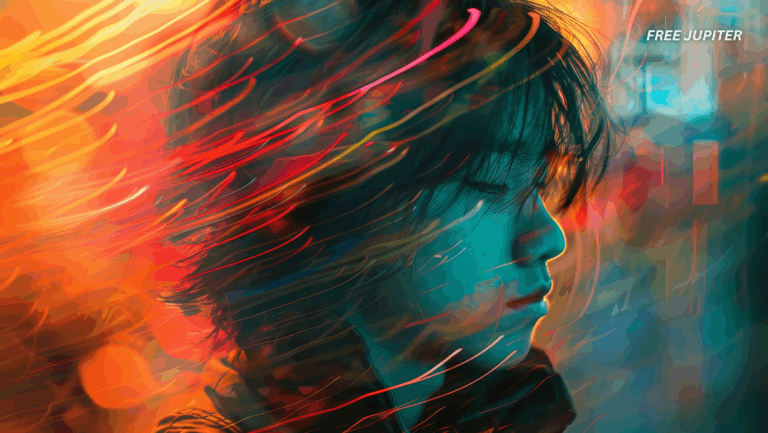It’s not every day that physics’ biggest names — Einstein, Hawking, and Kerr — all get a round of applause from the universe itself. But that’s exactly what happened when the Laser Interferometer Gravitational-Wave Observatory (LIGO) detected one of the clearest signals yet of black holes colliding, confirming predictions that have been debated for decades.
This isn’t just another “space news” headline. It’s a milestone that ties together theories stretching back over a century, technology that once seemed impossible, and mysteries that might one day lead us to something physicists call quantum gravity.
What Exactly Did LIGO Detect?
LIGO, which operates from two observatories in the U.S. (Louisiana and Washington), specializes in picking up gravitational waves. Think of these as faint ripples in the very fabric of space and time, a bit like tossing a pebble into a cosmic pond.
These ripples were first predicted by Albert Einstein in 1915 as part of his general theory of relativity. He argued that when extremely massive objects — like black holes or neutron stars — crash into each other, the disturbance is so powerful that it literally warps spacetime.
For a long time, Einstein himself believed humans would never be able to detect such delicate waves. After all, by the time they reach Earth, these ripples are tinier than a fraction of a proton. Yet, a century later, LIGO has proven him wrong — and that’s a rare case where Einstein underestimated human ingenuity.
Read more: JWST Observations Hint at The First Direct Proof of ‘Primordial Black Holes’
The Black Hole Collision Behind the Signal
The latest detection, nicknamed GW250114, came from two black holes colliding somewhere deep in the universe. Each of these black holes had a mass around 32 times that of the sun.
When they smashed together, they formed a new, larger black hole. The energy released in that single moment was so immense that it radiated out as gravitational waves — which LIGO picked up here on Earth.
Scientists describe this particular signal as “louder” than previous ones, not in terms of sound but in terms of clarity. One researcher compared it to hearing a whisper become a shout.
How Hawking’s Theory Fits In
One of the most striking confirmations from this detection relates to Stephen Hawking’s area theorem, proposed in the 1970s.
Hawking argued that when black holes merge, the surface area of their “event horizons” — the invisible boundary beyond which nothing, not even light, can escape — can never shrink. The combined event horizon must always be bigger than the sum of the original two.
This is exactly what LIGO’s data showed. The two original black holes had a combined surface area roughly equal to the size of the United Kingdom. But the new, merged black hole’s surface area ballooned to about the size of Sweden.
It’s a cosmic one-way street: black holes grow when they eat, but they never slim down.
Enter Roy Kerr: The Voice of Black Holes
Another prediction checked off the list belongs to Roy Kerr, a mathematician from New Zealand who described how rotating black holes should behave.
After a merger, black holes enter what scientists call the “ringdown phase.” Picture striking a giant bell — it vibrates, releasing sound at distinct pitches. Similarly, a newly merged black hole “rings” by sending out gravitational waves at very specific frequencies.
According to Kerr, these “voices” can be described using only two numbers: the black hole’s mass and its spin. That’s it. Unlike stars, which require all sorts of complicated details to describe, black holes are cosmically minimalistic.
With GW250114, scientists finally had a signal clear enough to pick out not just one, but two of these gravitational tones — and they matched Kerr’s prediction perfectly.
A Decade of Listening to the Universe
This discovery is especially poetic because it comes almost exactly 10 years after LIGO’s first major detection in 2015 (GW150914). That first signal traveled for 1.3 billion years before Earth caught it, marking the dawn of a whole new branch of astronomy.
Instead of only looking at the sky with telescopes, scientists could now listen to the universe by detecting the ripples of its most violent events.
In the years since, LIGO and its global partners — Virgo in Italy and KAGRA in Japan — have detected dozens of events, ranging from black hole mergers to neutron star collisions. Each one has added new pieces to the puzzle of how the cosmos works.
Why This Matters Beyond “Cool Space News”
On the surface, this might sound like scientists congratulating themselves for confirming old theories. But the implications go much deeper:
- Testing the limits of relativity: Every detection gives us new chances to see if Einstein’s theory ever breaks down. So far, it hasn’t.
- Understanding black holes better: These objects used to be thought of as theoretical oddities. Now they’re real, measurable, and increasingly familiar.
- Toward quantum gravity: The biggest dream in physics is unifying general relativity (which explains the large-scale universe) with quantum mechanics (which rules the tiny, subatomic world). Gravitational wave science might help bridge that gap.
The Tech That Made It Possible
LIGO’s success is as much a story of engineering as it is of physics. Its detectors can measure changes in distance as small as one ten-thousandth the width of a proton. To put that into perspective: if you stretched a ruler from Earth to the nearest star, LIGO could detect a shift smaller than the width of a human hair.
This level of precision didn’t come easy. Scientists like Rai Weiss, Kip Thorne, and Barry Barish — who won the Nobel Prize in 2017 — spent decades developing ways to cancel out “noise” from earthquakes, traffic, and even tiny vibrations inside the detectors themselves.
Kip Thorne himself admitted that when he first heard Weiss’s idea in the 1970s, he thought it had “no chance” of working. And yet, here we are, listening to black holes collide.
A Look to the Future
The story doesn’t end here. LIGO continues to undergo upgrades, with a planned fourth detector in India that will allow scientists to pinpoint gravitational wave sources with even greater accuracy.
And there’s an even more ambitious project on the horizon: the Laser Interferometer Space Antenna (LISA), a space-based detector planned by the European Space Agency and NASA. Scheduled for launch in the 2030s, LISA will use three satellites millions of kilometers apart to detect waves from even larger cosmic events.
Read more: Black Holes That Turn Matter Into Dark Energy May Solve ‘Cosmic Hiccups’ Mystery
Humanity’s New Lens on the Cosmos
Perhaps the most remarkable part of all this is how it changes our perspective. For centuries, we relied on light — visible, radio, X-ray — to study the sky. Now we’re listening to the universe directly.
What started as Einstein scribbling equations on paper, Hawking making bold predictions about black hole entropy, and Kerr working out the math of spinning monsters has blossomed into a new way of doing astronomy.
In the words of one researcher: we’ve gone from whispers to shouts. And if the last 10 years are any indication, the universe still has plenty more stories to tell — if only we keep listening.
Featured image: Freepik.
Friendly Note: FreeJupiter.com shares general information for curious minds. Please fact-check all claims and double-check health info with a qualified professional. 🌱










